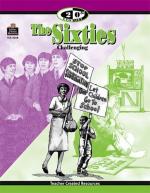|
This section contains 813 words (approx. 3 pages at 300 words per page) |

|
Harvey Friedman joined the Stanford faculty two days before his nineteenth birthday in 1967. Friedman, the youngest professor ever at that time, just "thought faster" than everyone else. He spent two years at MIT earning his undergraduate degree, then one more earning his Ph.D., a regimen that normally takes seven years. Excited about his teaching assignments in both science and mathematics, Friedman commented, "It's going to be fun teaching — even if my students are older than I am."
Source: Newsweek (2 October 1967): 56.
What Actually Goes on in the Classroom.
Whereas progressives believed that science, for example, is best taught in the context of real-life problem solving, basic education proponents agued that skills must be taught directly. Carl Hansen, Washington, D.C, school superintendent whose Amidon experimental school in an urban-renewal area had received wide attention for academic success, came down...
|
This section contains 813 words (approx. 3 pages at 300 words per page) |

|




